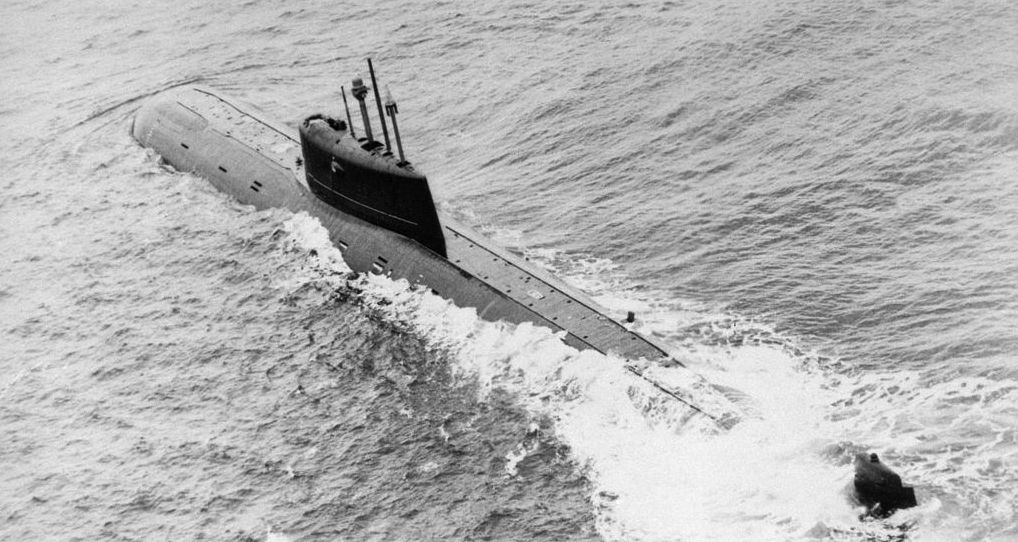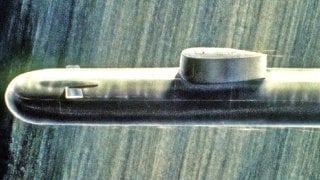'Sir, the Nuclear Submarine Is Sinking': Russia Lost a Sub While Trying to Scrap It
In the Fall of 2003, the aged Russian nuclear-powered submarine K-159 sank in the Barents Sea, resulting in the deaths of nine sailors and leaving a potential environmental hazard due to its onboard nuclear reactor.
Summary: In the Fall of 2003, the aged Russian nuclear-powered submarine K-159 sank in the Barents Sea, resulting in the deaths of nine sailors and leaving a potential environmental hazard due to its onboard nuclear reactor.

-Originally commissioned in 1963 and decommissioned in 1989 without being defueled, the K-159 sank while being towed for scrapping, highlighting its deteriorated condition.
-The wreckage, lying 781 feet underwater, poses a significant threat due to its corroded hull and the presence of spent nuclear fuel. Despite considerations for salvage operations, the K-159 remains on the seabed. In 2020, President Vladimir Putin proposed a salvage plan estimated at $330 million.
2003 Sinking of Russian Submarine K-159: A Lingering Nuclear Threat
In the Fall of 2003, the aged Russian submarine K-159 sank in the Barents Sea while being towed to a scrap yard. The sinking, which resulted from a leak in the ship’s hull, killed nine Russian sailors. Aside from the immediate loss of life, the sinking of K-159 had potentially serious long-term ramifications. The vessel was nuclear-powered, and its nuclear reactor went down with the ship.
When K-159 sank, she drew immediate comparisons to the Kursk, which had sunk three years prior, causing the deaths of 118 sailors. But as a Russian official told TIME in 2003, the K-159 “presents a threat more menacing than that of the Kursk” because the Kursk was a modern ship whose reactors were unlikely to spew radioactive byproduct before the submarine could be salvaged. The K-159, however, was in much worse condition. “There’s no telling how [K-159] will hold up under water,” the Russian official said.
Hanging by a Thread
Pictures of the K-159 taken right before she was towed away for scrapping show a decrepit, rusted vessel kept afloat only through the support of four large buoy devices. Looking back at the pre-towing pictures, the K-159’s sinking appears inevitable.
The 2003 sinking was hardly the K-159’s first mishap. First commissioned in 1963, the K-159 was involved in a mishap in early 1965, barely a year into her service tenure, when radioactive material was discharged into her steam generators. The mishap was just one of many. The K-159 was in and out of port for numerous repairs before being decommissioned in 1989.
Once decommissioned, the K-159’s nuclear reactors were not defueled.
As TIME reported at the time: “The wreckage is under crushing pressure, 781 ft. down, and its hull is deeply corroded. Although its reactors ground to a halt 15 years ago, the spent nuclear fuel – 1,760 lbs. of the stuff – was never unloaded.”
Aside from the geographic inconveniences of the K-159’s sinking location, there were unfortunate economic realities as well. The “K-159 sank in the waters between Russia and Norway, an area crisscrossed by commercial shipping lanes and fishing boats,” TIME reported.
Postponed Salvage Efforts
While the Russians and later the British considered timely salvage operations in the years following the K-159’s sinking, 21 years later the K-159 is still entombed in the Barents Sea. In 2020, Russian President Vladimir Putin offered a draft decree for the salvaging of K-159 and K-27, as well as four nuclear reactors. The cost of the salvage was estimated at $330 million.

The salvage operation will likely be limited to the submarine’s nuclear compartment, rather than the entire vessel, which would be impractical. The K-159 is a November-class submarine, measuring over 100 meters in length, with a submerged displacement over 4,000 tons.
About the Author: Harrison Kass
Harrison Kass is a defense and national security writer with over 1,000 total pieces on issues involving global affairs. An attorney, pilot, guitarist, and minor pro hockey player, Harrison joined the US Air Force as a Pilot Trainee but was medically discharged. Harrison holds a BA from Lake Forest College, a JD from the University of Oregon, and an MA from New York University. Harrison listens to Dokken.
All images are Creative Commons.
From The Vault


